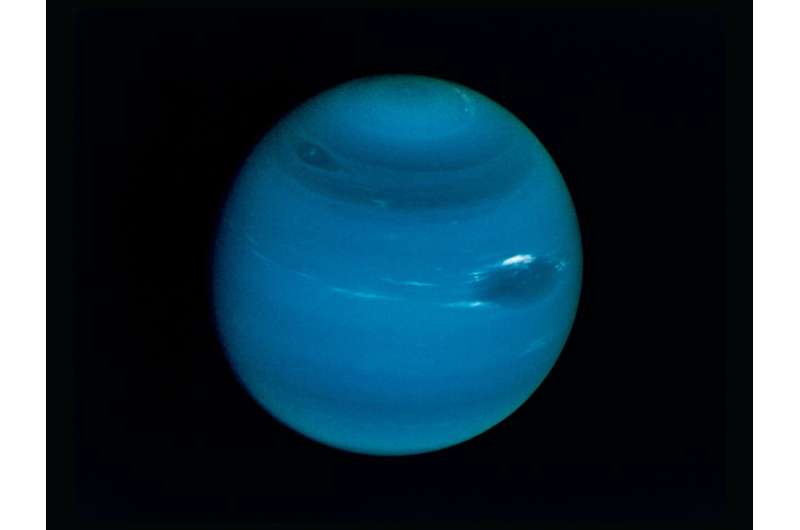This article has been reviewed according to Science X's editorial process and policies. Editors have highlighted the following attributes while ensuring the content's credibility:
fact-checked
trusted source
proofread
Fall into an ice giant's atmosphere

The unique atmospheric compositions of "ice giant" planets Uranus and Neptune were recreated to simulate a plunge deep within them, using suitably adapted European shocktubes and plasma facilities.
Taking place as part of an effort to simulate the flight of proposed atmospheric probes, the test campaign achieved an equivalent speed up to 19 km/s—although further work will be needed to reach the actual velocities that probes into these gas giants would attain.
Testing took place inside the hypersonic plasma T6 Stalker Tunnel at Oxford University in the U.K., along with the University of Stuttgart's High Enthalpy Flow Diagnostics Group's plasma wind tunnels in Germany, as shown in the video clip here.
Whether by impacts, landings or atmospheric probes, human-made spacecraft have touched all the planets of the solar system except two: the outer gas giants Uranus and Neptune.
Now both NASA and ESA are considering future missions to this intriguing pair, almost identical in size.
While superficially similar to Jupiter and Saturn, with their hydrogen and helium atmospheres, Uranus and Neptune also contain sizeable heavier elements in the form of "supercritical" liquid oceans deep below the surface clouds, which account for much of both planets' masses.
Both worlds also have methane in their atmospheres—accounting for their blue appearance—although less in the case of Neptune, where it is concentrated lower in the atmosphere, so becomes less of a factor in modeling any probe flight.
As part of any future mission to one or both worlds, an atmospheric probe resembling the one flown by NASA's Galileo mission to Jupiter is high on scientific wish lists.
"The challenge is that any probe would be subject to high pressures and temperatures, and therefore would require a high-performance thermal protection system to endure its atmospheric entry for a useful amount of time," explains Louis Walpot, ESA aerothermodynamics engineer.
"To begin designing such a system we need first to adapt current European testing facilities in order to reproduce the atmospheric compositions and velocities involved."
The entry rate of atmospheric probes is set by the speed required to orbit them—about 25 km/s inertial velocity in the case of Uranus and Neptune.
This has been a joint UK/German/ESA project, supported by the Agency's General Support Technology Program. As a next step, work is underway to extend the simulated velocities achievable in both the Oxford and Stuttgart wind tunnels.
Provided by European Space Agency





















